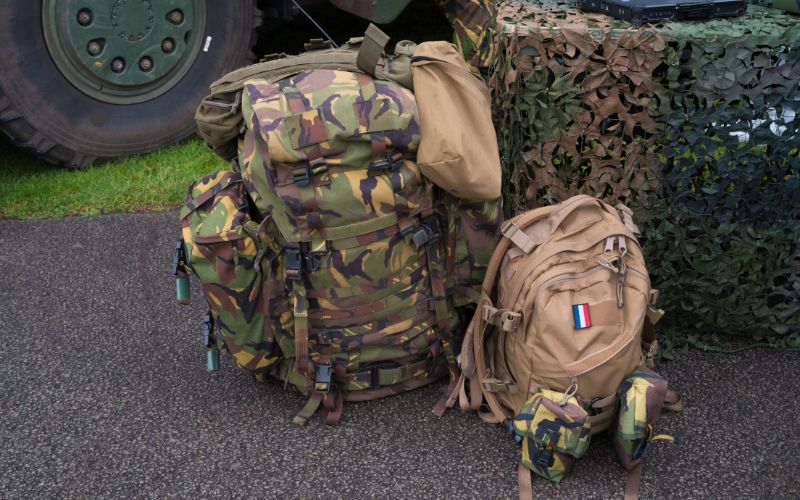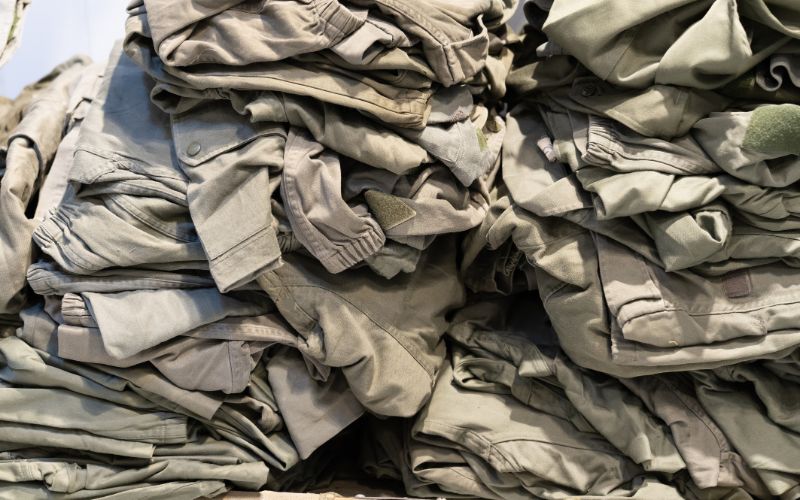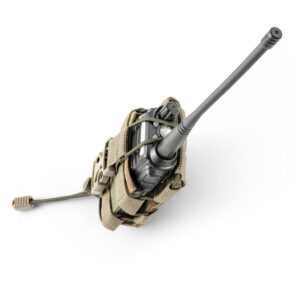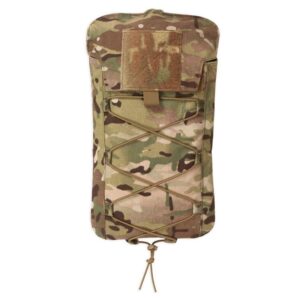How To Build A Military-Grade Bug-Out Bag

When disaster strikes or an emergency arises, having a well-prepared bug-out bag can mean the difference between life and death. Preparedness is ingrained in the training and mindset of those in the military. A military-grade bug-out bag is not just about having the right items but ensuring they are strategically chosen for efficiency and survival in the toughest conditions. This Chase Tactical guide will help you build a bug-out bag, ensuring you’re prepared for any scenario.
Bug-Out Bag Essentials For 72 hours
Military operations often require quick mobility and the ability to sustain oneself independently. A Bug Out Bag tailored for 72 hours ensures that essential tools and supplies are available to remain operational in various scenarios, from natural disasters to combat situations. This preparedness enhances the capability to perform missions without relying on external resources, which might be unavailable during emergencies.
1. The Backpack: The Backbone of Your Bug-Out Bag
The backpack is the foundation of any Bug Out Bag. It must be exceptionally durable, spacious, and comfortable for extended wear. The Chase Tactical Large Hydration Pouch is an exemplary choice due to its robust construction and ergonomic design. This backpack features high-denier nylon material that resists wear and tear, multiple compartments for efficient organization, and padded straps for comfort during long treks.
When selecting a backpack, consider capacity, durability, and comfort. High-quality backpacks should have ample space to store essential items while distributing weight evenly to avoid fatigue. The Chase Tactical Large Hydration Pouch meets these criteria, making it an ideal choice for a military-grade Bug Out Bag.
2. Make a Gear List: Organize and Plan
What should you have in that Bag? The first step to implementing emergency preparedness is having a thorough gear list. From a B.O.B., a detailed list ensures you remember important items and helps keep your supplies checked and turned over so they stay fresh and useful. Label your gear by function, such as shelter, food, water, and tools, so you can find it quickly during an emergency.
a) Water: The Essence Of Life
Water is the most critical resource in any survival scenario. Having reliable methods to carry, filter, and purify water is paramount. This ensures that you can maintain hydration and prevent dehydration, which can impair cognitive and physical abilities. Durable, BPA-free water bottles and a reliable hydration system like the Chase Tactical Large Hydration Pouch are essential for a Bug Out Bag.
Portable filters such as the Sawyer Mini or LifeStraw are indispensable to make natural water sources safe to drink. These filters are compact, lightweight, and effective at removing harmful bacteria and protozoa.
b) Food: Sustenance For Survival
Maintaining energy and stamina is crucial when high-calorie, non-perishable food items are essential. Meals Ready-to-Eat (MREs) are ideal due to their convenience and nutritional value.
Storing food in waterproof containers protects it from moisture and contamination. Regularly rotating your food supply ensures that it remains fresh and ready for consumption when needed. To sustain optimal energy levels and well-being in a 72-hour emergency, it is essential to choose and store non-perishable, high-calorie food items meticulously.
c) Shelter: Protection From The Elements

A reliable shelter is essential to protect from harsh weather and ensure personal security. Lightweight, durable options like a tarp or a plastic tube tent are ideal, as they can be set up quickly and provide adequate protection from the elements. Remember to bring a sleeping bag rated for cold temperatures, and consider carrying an emergency bivvy sack for extra warmth.
d) Rope or Cordage: Versatile and Essential
A rope or cordage, such as a paracord, is one of the most versatile items in a Bug-Out Bag. It has many uses that will make it an essential gear for law enforcement, the military, or anyone preparing for emergencies. Besides some of its more famous uses, like tensile strength- the ability to bear quite a weight, while remaining light and portable- two of the most important uses of rope are for setting up shelters. You can also use it to make temporary tents or tarps to ensure vital protection against the elements in survival situations. You can also use it to tether your gear around your pack or to a tree so that very important equipment will not be lost and damaged.
3. Fire: Warmth And Signaling
Fire is crucial for warmth, cooking, and signaling for help in survival situations. Having multiple fire-starting methods in your Bug Out Bag increases your chances of successfully starting a fire under various conditions. Equip your bag with butane lighters, waterproof matches, and a ferro rod. Pre-packaged tinder or cotton balls soaked in petroleum jelly can make starting a fire easier, even in adverse conditions.
Knowing and practicing different fire-starting techniques is essential. This knowledge can be life-saving, ensuring you can always create a fire when needed.
4. First Aid: Immediate Medical Care
A well-equipped medical kit is vital for treating injuries and preventing infections. Chase Tactical Medical Kits offer comprehensive solutions designed for demanding use, ensuring you have the necessary supplies to handle various medical emergencies. Your kit should include various bandages and dressings, antiseptics, pain relievers, personal prescriptions, and essential tools like tweezers and scissors. A tourniquet is also crucial for controlling severe bleeding.
This preparedness can mean the difference between life and death in a survival situation, especially when professional medical help is not readily available.
5. Tools: Multi-Purpose Equipment

Multi-purpose tools provide versatility and functionality in survival situations. A multitool with:
- Pliers
- Knife
- Screwdrivers
- Flash
These are invaluable for various tasks, from repairs to building shelters. For more demanding tasks, complement it with a durable fixed-blade knife, a folding shovel for digging and other utility purposes, and duct tape for repairs and first aid.
6. Clothing: Adaptability To Conditions

Your clothing is your first line of defense against the elements. Military-grade clothing should be durable, versatile, and suitable for various weather conditions. Base layers should be moisture-wicking and quick-drying to manage sweat and maintain comfort. Layers like fleece or down jackets provide warmth in cold conditions. Waterproof and windproof outer layers protect against harsh weather, while durable, comfortable boots are essential for covering long distances on foot.
High-quality, moisture-wicking socks and underwear are also important for maintaining hygiene and comfort. Dressing in layers allows you to withstand changing conditions and stay warm, dry, and protected from the elements.
7. Communication: Staying Connected

Maintaining communication can be crucial in a bug-out situation. Equip yourself with two-way radios for short-range communication with your team, an emergency radio for weather alerts and updates, and visual signaling tools like a signal mirror and a whistle. Establishing a communication plan with your group and regularly testing your communication devices ensures they work when needed.
Effective communication helps coordinate efforts, relay important information, and call for help if necessary. In a survival situation, communicating effectively can significantly affect the outcome, so it’s important to protect your communication device in the Chase Tactical Molle radio pouch.
8. Navigation: Knowing Your Route
Knowing where and where you’re going is crucial in any survival situation. Reliable navigation tools include a map and compass, which are not dependent on batteries and can be used in various conditions. A GPS device can be useful, but it should be one of many navigation tools. A quality compass with a sighting mirror and a pace counter helps track the distance traveled on foot.
Learning to read a map, using a compass effectively, and familiarizing yourself with multiple routes ensure you can navigate safely and efficiently in unfamiliar terrain. This knowledge is vital for reaching safety and avoiding dangerous areas.
Most Common Bug-Out-Bag Essentials People Usually Forget
- Personal Identification & Copies of Important Documents
- Cash in Small Bills
- Extra glasses or Contact lenses
- Hygiene Items: toothbrush, hand sanitizer, etc.
- Extra Batteries (AAA, AA, etc.)
- Notepad and Pen
Conclusion
Building a military-grade Bug Out Bag requires careful planning and the right gear. By following the above guidelines and using high-quality products like the Chase Tactical Large Hydration Pouch and Chase Tactical Medical Kits, you can ensure you are prepared for any emergency. The key to survival is having the right equipment and knowing how to use it effectively. Stay prepared, stay safe, and be ready for whatever comes your way.
Frequently Asked Questions
What type of stuff should go into a military-grade bug-out bag?
When building your bug-out bag, it’s crucial to prioritize the essentials—think survival duty, not just comfort. Start with a firestarter, water filter, and compact first-aid kit. Include high-calorie food rations, navigation tools, and multi-tools. Add durable pouches for organization. Everyone in your family should have a custom bag based on their needs. Don’t forget: a well-built bag is your safety net in any country or situation.
What size should a bug-out bag be?
Size matters when it comes to choosing the right bug-out bag. A 30-50 L backpack is ideal for portability versus storage capacity. The bags must have robust straps since you will walk for hours or even days. You can also put in lightweight and compact instruments, such as a radio with Bluetooth or an FM radio receiver, which would keep you connected with emergency broadcasts and ensure the volume is up for alerts.
What is it called a bug-out bag?
The term “bug-out bag” is perhaps a derivative of the “bail-out bag” utilized by military aviators as a device for emergency preparedness. In the Korean War, the U.S. Army had already designated alternate defensive positions so units could bug out swiftly in case they needed to withdraw. Today, every person must have a bug-out bag packed with everything necessary to handle sudden emergencies.


